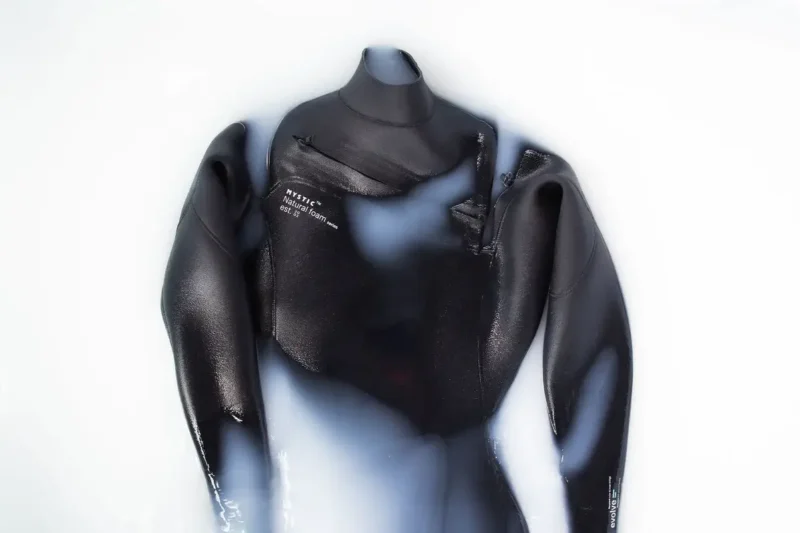NeilPryde introduces 2026 wing collection!
Dive into the 2026 collection and discover what NeilPryde has in store this year!
READ MORE

MYSTIC are taking a step into the future, and it's for the better. Things are turning green and we're here for it! Let's take a look inside their new EVOLVE series and how it's the next best thing.
Petroleum-based wetsuits, also known as neoprene, have been the industry standard since the 1950s. And to be fair, they changed everything. They’ve let us surf, kite, windsurf, and foil year-round in cold-water regions. They’ve taken us to sub-zero zones. They’ve kept us out all day, pushing limits without worrying about hypothermia (okay, ice-cream headaches still happen on occasion).
“A wetsuit is what makes our sports possible. It lets us go out in any season, in any conditions. Without a good wetsuit, you can’t ride the way you want to.”
– Edwin Schaap, Design Director
As materials and tech improved, so did our expectations for warmth, stretch, and comfort. But alongside performance, the pressure to reduce environmental impact was building. That’s why we set out to build a wetsuit that keeps up with high-performance riding — while doing better by the planet.
Whats the Alternative?
Renewable materials — ingredients that can replenish over time if sourced responsibly. That’s where natural rubber comes in. It’s harvested from rubber trees as latex sap, then refined into solid sheets. These sheets are whipped with air and baked into a flexible foam, which is later laminated with fabric and cut into panels to be stitched or glued into wetsuits.
These days, you’ll see more wetsuits being made with natural rubber. We’ll admit, many of them are improving. But as riders who obsess over how wetsuits feel, our conclusion was simple: they didn’t stretch enough.

What About Limestone Neoprene?
Our top-range wetsuits use premium limestone from Yamamoto, a material known for its unbeatable warmth, lightness, and stretch. If you’ve ever worn one of our Yamamoto suits, you know just how high-performance they feel in the water.
Unlike petroleum-based neoprene, limestone-based neoprene starts with a natural source. While it still requires energy to produce and isn’t renewable, its durability and performance mean you’ll get more wear, making it a longer-lasting choice.

Built from Natural Foam
Our ongoing search for better alternatives led us to Natural Foam — a material that outperformed everything else we tested. It’s lighter, softer, and inherently more flexible. Made from USDA-certified ingredients and renewable sources like natural rubber, sugarcane, oyster shells, and non-edible plant oils. That unique composition means the stretch isn’t forced — it’s built in. It also comes with a significantly lower carbon footprint compared to traditional petroleum-based neoprene.
Each ingredient plays a role:
 |
 |
All the details on EVOLVE, the wetsuits and more over at MYSTIC
Dive into the 2026 collection and discover what NeilPryde has in store this year!
READ MOREIt was only a matter of time until we saw the new era of Foil, integrating Foil Drive into their products, North unveils the UHM Carbon Integrated Foil Drive Mast and Boost Foil Drive Board.
READ MORE